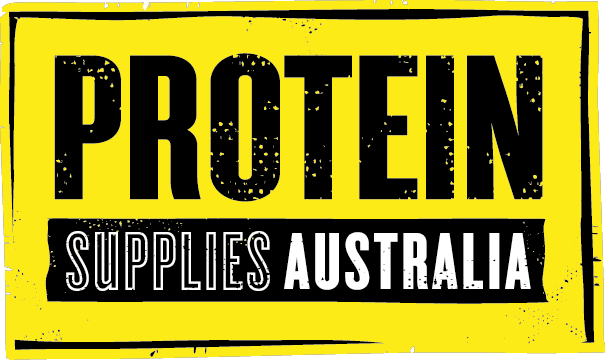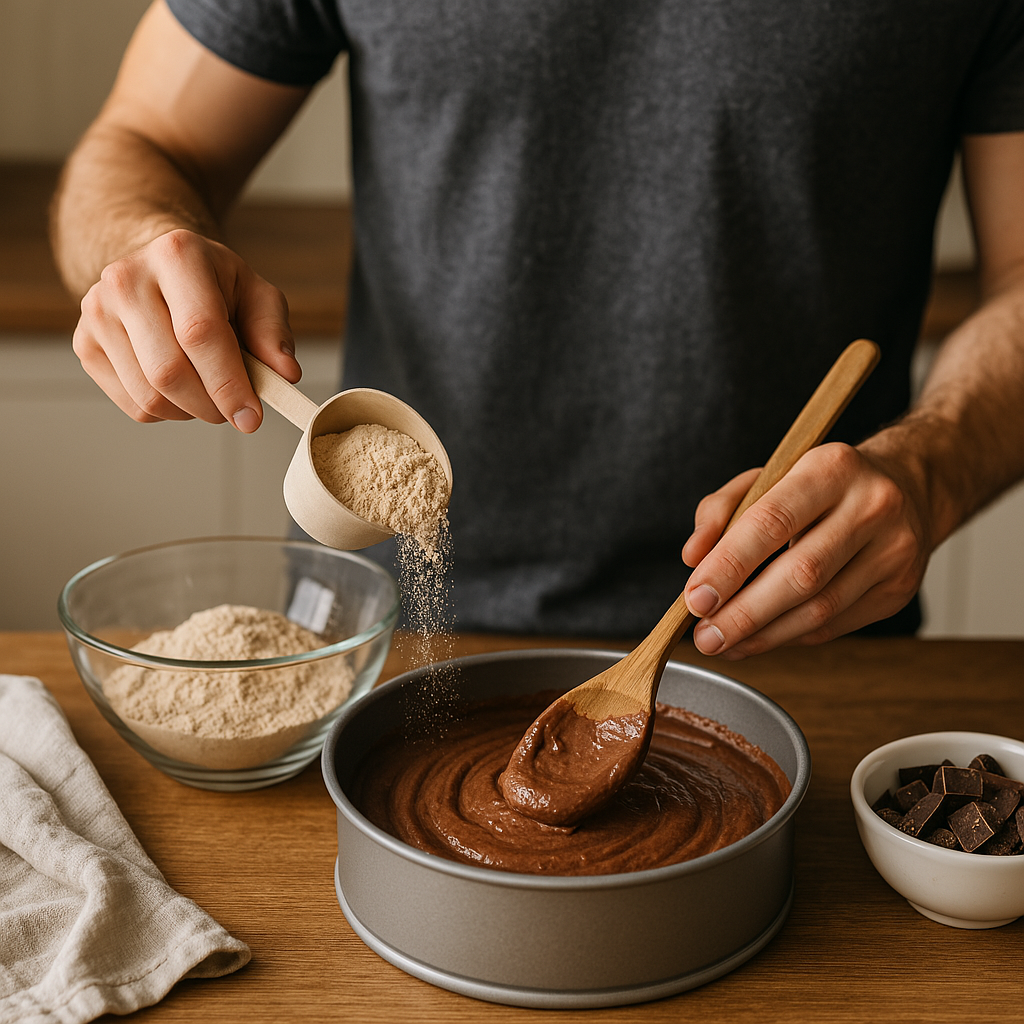Looking to enhance your baked goods with baking protein powder? In this guide, we explore how to use different types of protein powders in your recipes. Learn which protein powders work best for cakes, cookies, and more, and get tips on achieving the perfect texture and flavour.
Key Takeaways
-
Choosing the right protein powder—whey, pea, or casein—greatly impacts the texture and flavour of your baked goods.
-
Adjusting moisture and temperature during baking is essential to prevent dryness and ensure tasty results.
-
Balancing protein powder with other ingredients is key to achieving a well-rounded nutritional profile without compromising texture.
Choosing the Right Protein Powder for Baking

Choosing the right protein powder is vital since different types can dramatically change the texture and flavour of your baked goods. This requires making adjustments in your recipes. Knowing the unique properties of each type helps avoid mishaps and ensures a perfect bake.
The best options for baking include whey protein powder, pea protein powder, and casein protein powder.
Whey Protein Powder
Whey protein powder is known for its satisfying taste, making it a popular choice for baking. However, it can lead to dryness and toughness in baked products. Adding more liquid or fat, such as water, milk, yogurt, or peanut butter, can improve texture.
This balances out the dryness, resulting in a better texture.
Pea Protein Powder
Pea protein powder is often praised for its excellent texture and flavor in baked goods, though it can have a slight legume-like taste. Adding flavors such as vanilla extract or maple syrup can help offset this.
Pea protein powder’s excellent texture can make muffins and other baked items more enjoyable.
Casein Protein Powder
Casein protein powder is a fantastic option for keeping baked goods moist, resulting in a softer texture. Its exceptional moisture retention makes it ideal for baking. The cake-like texture achieved with casein protein powder enhances the overall eating experience of baked products.
If you’re looking to bake something soft and moist, casein is your go-to.
Best Protein Powders for Specific Baked Goods

Choosing the right protein powder for specific baked goods can significantly impact the final outcome. Whey, soy, and pea protein powders can all enhance texture and flavor in various items. Understanding how each type affects the final product helps you select the best option for your recipe.
Here are the best protein powders for cookies, muffins, and pancakes.
Protein Cookies
Whey protein is recommended for chewy cookies, while pea protein powder is suitable for softer, cake-like cookies. Vegan protein powders are advisable for achieving crispness in cookies; almond and peanut protein powders can serve as effective alternatives.
Enhance moisture and prevent dryness by using fats such as nut butter, coconut oil, or regular butter in your protein cookie recipes.
Protein Muffins
Selecting the right protein powder is key to achieving the desired muffin texture and flavour. Pea protein powder is recommended for its consistency, contributing to a better texture.
Whey protein powder, on the other hand, can lead to dry and firm muffins, making it less suitable for achieving fluffiness.
Protein Pancakes
For higher-carb pancakes, whey protein is suggested. Pea protein blends are ideal for low-carb pancakes, creating the fluffiest texture, although they impart a slight pea flavour.
Choose your best protein powder or pure protein powder based on your dietary goals and flavour preferences.
Enhancing Nutritional Value with Protein Powder
Incorporating protein powder into baked goods can substantially increase their overall protein content, making them more nutritious. Adding protein powder is an excellent way to boost the protein content of your favorite treats or create new high-protein recipes.
Let’s explore how to increase protein content and balance macronutrients in your baked goods.
Increasing Protein Content
Start by substituting one scoop of protein powder to test its impact on flavor and texture. Avoid exceeding a 25% substitution of flour to prevent overpowering the dish.
Using oat flour instead of regular flour can boost protein content while maintaining versatility in various baked items.
Balancing Macros
Balancing carbohydrates, fats, and proteins in baking recipes creates a well-rounded nutritional profile. Adding protein powder aligns baked goods with macro-nutritional goals, reducing sugar content and increasing protein levels.
Adjusting the ratio of protein powder to other ingredients can help maintain the desired texture while ensuring adequate protein intake.
Tips for Successful Baking with Protein Powder
Baking with protein powder can be tricky, but the right tips can help you achieve delicious results. Excessive protein powder can result in dry, unappetizing products. Balancing the amount used is key to success.
Here are some tips to help you bake successfully with protein powder.
Moisture Management
Incorporating moist ingredients like yogurt or applesauce when using protein powder enhances texture and prevents dryness. Swapping traditional fats like butter with Greek yogurt retains moisture and boosts protein levels.
Managing moisture is essential when baking with protein powders to avoid dryness.
Avoiding High Temperatures
Using lower temperatures or shorter baking times prevents protein powder from clumping and losing texture. For whey protein in a metal pan, set the oven to 325 degrees F to preserve the protein’s integrity and ensure a better product.
Proper Storage
Store protein powder in a cool, dry place, away from moisture and sunlight. Keep the container tightly closed after use to maintain freshness.
Transferring protein powder to an airtight container secures its storage and prolongs shelf life.
Delicious Protein-Packed Recipes
Incorporating protein powder and healthy collagen protein into your baking can create treats that are both tasty and nutritious with mix davis baking protein.
Here are some recipes to get you started on your protein baking journey.
Protein Banana Bread
When baking protein banana bread, choosing the right protein powder, such as whey or casein, significantly influences texture and moisture. Whey protein isolate can enhance flavor but may cause dryness if not balanced with fats or liquids.
Casein protein powder helps retain moisture, providing a soft, cake-like texture. Adding protein powder to banana bread boosts its nutritional profile, making it a good source of protein.
Chocolate Chip Protein Cookies
Vegan protein powders are recommended for crispness, while whey protein provides a chewy texture in chocolate chips cookies. Whey protein offers good taste but can cause dryness, so adding more liquid or fat helps improve texture.
Maintain moisture by incorporating ingredients like mashed banana, yogurt, or nut butter. Avoid high temperatures to preserve texture and prevent clumping.
Protein Cheesecake
Whey protein concentrate is recommended for making a protein cheesecake due to its creamy texture. Using plant-based protein powders in cheesecakes can produce a grainy mouthfeel and a softer texture.
To achieve a better consistency in the base of a protein cheesecake, avoid adding eggs.
Common Mistakes to Avoid
Using the wrong protein powder can lead to a poor final product. Protein powder should not completely replace flour, as it has different properties. High heat can denature protein powders, causing clumping and a gritty texture.
Avoid these common mistakes to ensure your baked goods turn out perfect.
Overusing Protein Powder
Overusing protein powder can result in dry, rubbery baked goods. When the batter is mostly protein powder, it becomes extremely dry and rubbery.
Stick to recommended serving sizes when using protein powder in recipes.
Incorrect Substitutions
Avoid substituting different protein powders for each other. Using the correct type is crucial for maintaining the desired texture and consistency in baked goods.
Summary
Incorporating protein powder into your baking can elevate the nutritional profile of your favorite treats. From choosing the right protein powder to mastering moisture management and avoiding common mistakes, this guide has provided you with the knowledge to succeed in protein baking. Now, it’s time to experiment and enjoy the delicious, protein-packed results!








Should You Be Drinking Protein Before Bed?
Top 25 Delicious Recipes Using Protein Powder to Boost Your Nutrition